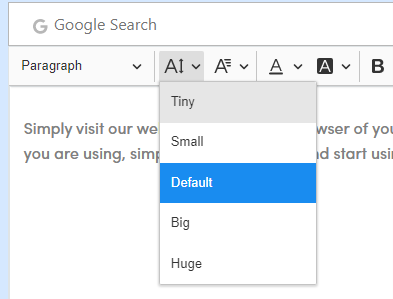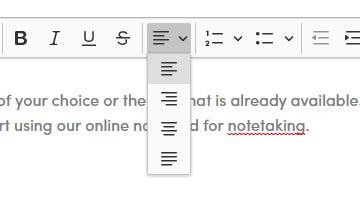If you are a writer, you might already have written various types of content or you might be starting now.
An expert writer will have no trouble creating blogs, guest posts, articles, eBooks, digital newsletters, brochures, flyers, promotional emails, and other types of content.
Anyone would break out in a cold sweat considering the volume of work that writers are expected to complete each day.
Additionally, even as a freelancer, it can occasionally be challenging to come up with ideas for a project and see it through to completion.
This overwhelming sensation causes writers to procrastinate because it makes them feel stressed and overwhelmed.
That situation has happened to all of us.
But do not worry; we will provide you with some advice on this blog on how to enhance and perfect your writing abilities as well as organize your work with the aid of proper tools.
Here Is a Step-By-Step Guide to Writing Better Content in a Faster Way
There are many uses for content writing, but marketing and business use is where it is most frequently employed.
Its goal is to inspire and educate readers while promoting and/or selling a range of goods, services, and knowledge.
Here’s how to write content better – and faster too:
1. Identify Context and Subject
Content writers must do this before they start.
Before writing a word, every writer must comprehend the subject and its context.
First, understand the subject, then proceed carefully and follow your method.
Every writer approaches different content categories differently.
The entire process is meant to suit the demands of the users who will be reading and using the site’s content.
If the content is not created to meet those wants and the website’s needs, there’s no sense in creating it.
Content creation is not easy, and the writer must be accurate.
Ensure you have thoroughly researched your issue.
2. Use or Update Your Content Strategy
Before beginning to generate any kind of content for any platform, it is essential to test and evaluate the reach of already existing relevant content.
The people who will make up the target audience read your content on the web, and they are the basis of why the entire method is carried out.
If the content is not generated in line with their and the internet site’s needs, there is no point in writing content for them.
It is crucial that you produce content that satisfies their needs because every website and/or system has a unique user interface and organizational structure.
3. Take the Help of Tools
We live in a time with a lot of new technology, and we are lucky to have access to tools and resources that help us be more accurate and efficient with our content.
The online-notepad.net is the ultimate evidence of this fact.
· Online-Notepad.net
The online notepad is an online, simple, user-friendly, free-to-use note-keeping tool that does more than just store plain notes.
Free Notepad online is a tool that lets you write basic and rich text and format it completely. It has a long list of advanced features that make it as easy as possible for the user.
Beginning with the tool’s absolute best UI (User Interface), it has a clean and vibrant layout that does not look raw and boring like its competitors.
Check out its top features below.
Following Are Some Comprehensive Features:
- Easy And Simple UI
Notepad has a simple, vibrant, and easy-to-use user interface.
- Plain Text Mode
Plain Text Mode simply displays plain text with no formatting options.
- Rich Text Mode
Rich Text Mode allows for advanced text formatting.
- Task List
The Task List gives the user a straightforward writing pad to list tasks, check them off as they are finished, and rearrange the order as needed.
- Text Sizes
There are various text sizes to choose from.
- Various Text Fonts
The text pad includes 9 different font styles.
- Colored Fonts
There are 15 different font color options.
- Font Background Colors
There are 15 available font background colors.
- Text Alignment
Text alignment helps align text.
- Link Insertion
Any link can be easily added by the user to the notes.
- Different Heading Sizes
The user has a choice between three heading options.
- Insertable Images And Tables
Advanced options for inserting tables and images of various sizes.
- Number/Bullet List
Text can be organized using bullet points.
- Lock Notes
To prevent any unauthorized access, notes can easily be locked.
- Pdf, Word, Docx, and Txt Format Support.
Importing and downloading standard note formats is easy.
- Break Content Down, Make It Readable.
Sort your section headings.
Headings “split” a lengthy article and help readers navigate.
Ensure large text’s readability.
Create easy-to-read, scannable content.
People today are much less likely to read long sections and more likely to skip sections or exit a website.
So if you want to write content better, make sure you organize it very well. Doing so helps readers to avoid navigation issues, making it easier for them to grasp your message.
Use content headings and highlights to help readers find information.
This saves consumers time and makes the content easier to read.
- Don’t Ramble; Be Brief and Direct.
As a skilled writer, I know how easy it can be to produce long, twisting streams of text.
If necessary, add more until it satisfies your needs.
Your content should not be too long or too short; find the perfect spot.
Most internet users scroll over text to get the info they want, so be concise.
A writer can overcome difficulties, minimize interruptions, and write more effectively and quickly with tools.
Throughout this procedure, make sure your content benefits the reader.
- Be Original And Versatile
Nobody likes reading or writing boring text.
Essay writing requires creativity.
It sets you apart from other genre authors.
This does not mean you must compose a story with exotic animals.
Use hook lines, alliteration, metaphors, and different phrase structures to make your writing stand out.
Create an identity for yourself as a writer who can create interesting content.
- Display and Explain
I’ve seen numerous websites that are all plain text.
These sites are uninteresting since they only have text.
Add graphics and illustrations to your content to express its theme and context.
Start with the intro graphic that describes the topic.
Conclusion
We covered subject and context, as well as show and tell, to help you write content better.
As a writer, knowing how to write well and structure well is crucial.
We’ve included a few tips for making the content writing process easier and helping you write high-quality content.













.webp)